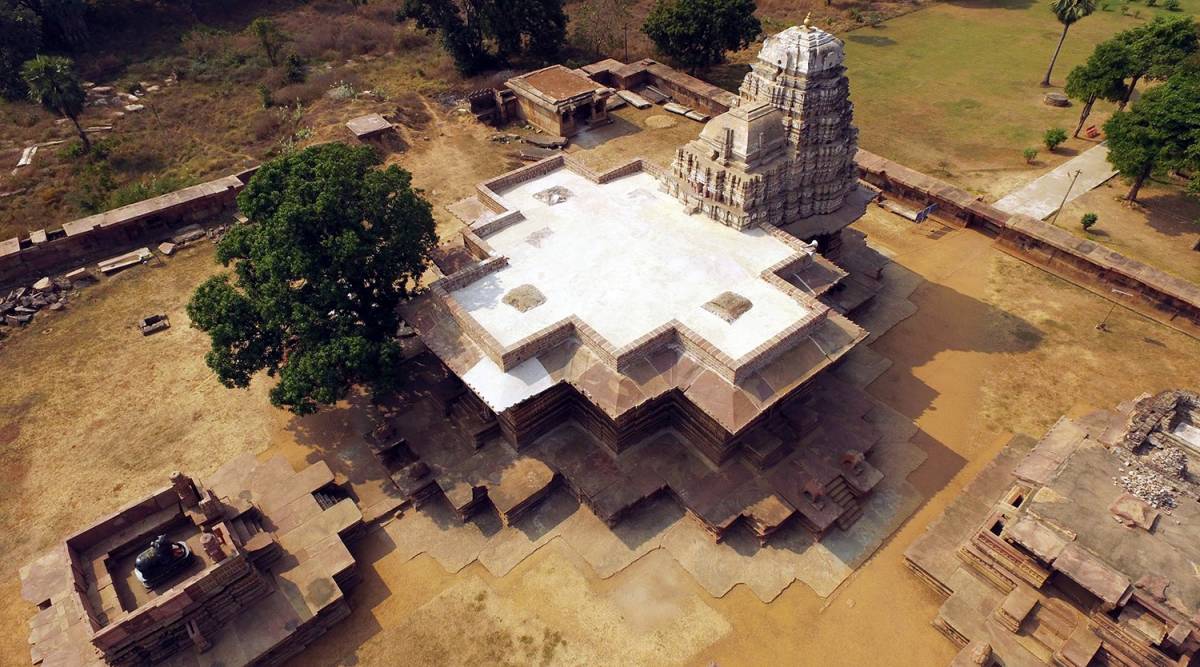April 9, 2022 4:00:24 am
 India’s rich heritage comprises tangibles like architecture and intangibles like the wealth of knowledge. (File)
India’s rich heritage comprises tangibles like architecture and intangibles like the wealth of knowledge. (File) Written by Govind Mohan
Albert Einstein is once said to have remarked, “We owe a lot to the Indians, who taught us how to count, without which no worthwhile scientific discovery could have been made.” While many of us may know about zero and its connection to India, it remains a regrettable fact that India’s contribution, across not just mathematics but many fields, remains at times unattributed and at others, uncelebrated.
Our history as an independent nation is 75 years old but our civilisation is more than 5,000 years old. Needless to say, the contribution and achievements of India are many and what better occasion than the Azadi Ka Amrit Mahotsav commemorating 75 years of independence to initiate a concentrated and focused effort in this direction.
“Dhara: An Ode to Indian Knowledge Systems” is the Ministry of Culture’s flagship initiative in this direction. It is conceptualised as a series of lecture demonstrations dedicated to specific areas of enquiry, highlighting India’s contribution and achievements across domains. Dhara embodies that idea of “continuous flow” of information and knowledge from one age to another, being adopted, questioned and evolved over time so that we not only move ahead to the next level of insights across various fields but do so on the back of the findings and deep understanding already available to us.
Endeavours connected to topics related to the ancient past often generate polarising responses due to a lack of credible and rigorous evidence. Our attempt at programme curation is mindful of the same and systemic efforts are being made to bring in academic scholars of the highest calibre to add rigorous reasoning and scientific credibility to these discussions. To put in perspective the richness of antiquity which has been crucial in the development of modern concepts, the following examples may be pondered upon.
It is impossible to imagine the advent of the modern world without the concepts of modern mathematics. But these concepts are not really modern. They were born in India several centuries ago. For the modern world, it was the Greek mathematician Archimedes who produced the first-known summation of an infinite series. However, it was used by Madhava (c 1,400 CE) to find the approximate value of pi (p). The Arabic numeral system owes its origins to the Bakhshali Manuscript, the first surviving reference of the Indian numeral system. This system was transmitted to the Arab world by around 800 CE and was popularised by the Persian mathematician Al-Khwarizmi and the philosopher Al-Kindi. From the Arab world, it was transmitted to Europe by around 1100 CE. It was Brahmagupta who established, way back in the 7th century CE, that “the product of a debt (negative number) and a fortune (positive number) is a debt (negative number)”. Similarly, be it the Fibonacci Series (ingenious work of Virahanka) or Pascal’s Triangle (Pingala’s Meru Prastara), ancient India’s contribution to modern
mathematics has been dominant and consistent.
Moving to another complex domain, that of the space sciences, Carl Sagan, a renowned American astrophysicist, astronomer, and astrobiologist, explained how the ancient cosmological ideas that were central to Hinduism form the basis of modern cosmology. He states, “The Hindu religion is the only faith dedicated to the idea that the Cosmos itself undergoes an immense, indeed an infinite, number of deaths and rebirths.” This is exactly what we know today as the theory of the multiverse.
We all know that India was a centre of trade; little is mentioned about India being a centre of manufacturing. The Damascus swords, with a high carbon content of 1.5-2.0 per cent and known to have the ability to cut even gauze kerchiefs, were made from Wootz steel in India. Till the 19th century, Wootz steel swords and daggers were made at centres such as Lahore, Amritsar, Agra, Jaipur, Gwalior, Tanjore, Mysore and Golconda. The Wootz steel with carbon nanotube structures continues to inspire researchers to this day. The manufacturing process was forcibly banned by the British in the mid-19th century; the art was lost. There are multiple such manufacturing capabilities that have been disappearing or being repackaged by other societies as their own. Prime Minister Narendra Modi’s flagship programme Make in India is a long-overdue step towards reviving our indigenous manufacturing capabilities.
One of the founding pillars of modern economics is the constant optimisation of risk and return, the fundamental thought which drives the theory of differential interest rate. While certain thought leaders in the West prohibited interest on borrowing (terming it a sin), ancient philosophers like Kautilya advocated interest rates that varied with risk. It is the treatise Sukraniti which explains the need to balance moral hazard and adverse selection issues between the borrower and the lender. It states that if the interest paid was more than double the principal, only the principal amount be paid back. The Sukraniti also emphasises the need to consider a household and not an individual as a unit of analysis.
India’s rich heritage comprises tangibles like architecture and intangibles like the wealth of knowledge. Our efforts through “Dhara: An Ode to Indian Knowledge Systems” are aimed at starting these conversations and debates and ensuring that our collective history of achievements does not stay forgotten in the folds of some withering manuscripts. We at the Ministry of Culture remain committed to spotlighting the myriad contributions of Indians across fields and to celebrate them as part of Azadi Ka Amrit Mahotsav.
The writer is Secretary, Ministry of Culture, Government of India
- The Indian Express website has been rated GREEN for its credibility and trustworthiness by Newsguard, a global service that rates news sources for their journalistic standards.

